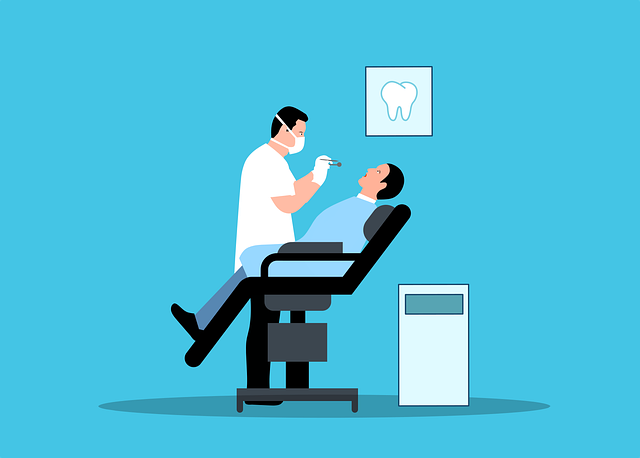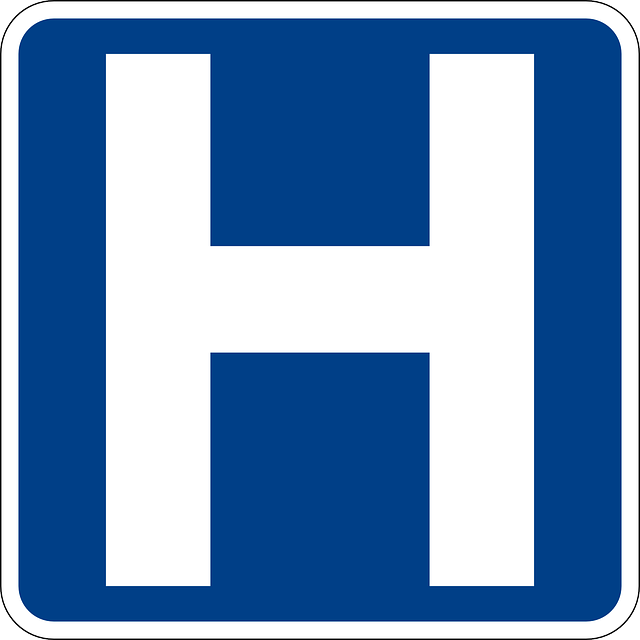Advanced diagnostic tools like molecular imaging, flow cytometry, and histology are transforming regenerative medicine by enabling precise cell identification, tissue damage assessment, and monitoring of therapeutic progress. Techniques such as MRI, CT, and optical imaging provide high-resolution insights into microenvironments and cell behavior, guiding targeted interventions. Molecular and genetic tests offer deep understanding of cellular function and genetics, facilitating personalized therapies. Bioinformatics plays a crucial role in interpreting complex data from these tools, enhancing knowledge of tissue repair mechanisms. Integrating these advanced diagnostics allows for tailored regenerative treatments, leveraging the body's natural healing processes to achieve optimal patient outcomes.
“The field of regenerative medicine is experiencing a paradigm shift with advancements in diagnostic tools, revolutionizing patient care and therapy outcomes. This article explores the intricate landscape of diagnostics specific to regenerative medicine, highlighting advanced imaging technologies, molecular and genetic tests, bioinformatics, and data analysis.
We delve into how these cutting-edge tools enable personalized therapies, enhancing visualization, unlocking cellular insights, and interpreting complex data for improved treatment strategies in this burgeoning field.”
- Understanding the Landscape of Regenerative Medicine Diagnostics
- Advanced Imaging Technologies: Enhancing Visualization and Assessment
- Molecular and Genetic Tests: Unlocking Cellular Secrets
- Bioinformatics and Data Analysis: Interpreting Complex Results
- Integrating Diagnostic Tools for Personalized Regenerative Therapies
Understanding the Landscape of Regenerative Medicine Diagnostics

In the realm of regenerative medicine, understanding the intricate landscape of diagnostics is paramount. The field, which aims to restore and regenerate damaged tissues and organs, heavily relies on advanced diagnostic tools to guide treatment strategies effectively. These tools play a pivotal role in identifying specific cellular types, assessing tissue damage, and monitoring the overall progress of regenerative therapies. By leveraging cutting-edge technologies, medical professionals can now peer into the microscopic world, unraveling the complexities of cellular interactions and tissue microenvironments.
The diagnostic arsenal for regenerative medicine encompasses a diverse range of techniques, including molecular imaging, flow cytometry, and advanced histological methods. Molecular imaging, for instance, enables the visualization of specific biomolecules and cellular processes involved in regeneration. Flow cytometry, on the other hand, facilitates the characterization of cells based on their physical and chemical properties, providing crucial insights into cell populations relevant to regenerative processes. Additionally, histological techniques offer detailed microscopic examination of tissues, helping researchers and clinicians assess the effectiveness of regenerative interventions at a granular level.
Advanced Imaging Technologies: Enhancing Visualization and Assessment

Advanced imaging technologies play a pivotal role in the realm of regenerative medicine, offering enhanced visualization and assessment capabilities that were previously unattainable. These tools enable medical professionals to gain deeper insights into complex biological structures, tracking cell behavior, and monitoring tissue regeneration processes with unprecedented accuracy. By combining cutting-edge techniques such as magnetic resonance imaging (MRI), computed tomography (CT), and optical imaging, researchers can now visualize the microenvironment of regenerative sites, assess the effectiveness of therapies, and make data-driven decisions to optimize patient outcomes.
In terms of diagnostic tools in regenerative medicine, these advanced imaging technologies facilitate precise identification of damaged or diseased areas, allowing for targeted interventions. For instance, MRI’s high-resolution capabilities enable the detection of subtle changes in tissue architecture, while CT scans provide detailed cross-sectional images, aiding in the planning and execution of regenerative procedures. Additionally, optical imaging techniques, such as confocal microscopy, offer real-time monitoring of cellular interactions and angiogenesis, ensuring that regenerative therapies align with the body’s natural healing processes.
Molecular and Genetic Tests: Unlocking Cellular Secrets

Molecular and genetic tests are transforming the field of regenerative medicine by providing unprecedented insights into cellular function and behavior. These advanced diagnostic tools enable researchers and clinicians to unlock the complex secrets of cells, offering a deeper understanding of both normal and diseased states. By examining the molecular and genetic makeup of cells, professionals can identify specific markers associated with regeneration and repair processes, paving the way for more targeted and effective therapeutic interventions.
In regenerative medicine, these tests play a pivotal role in selecting appropriate cell types for transplantation, assessing their viability, and monitoring their integration into host tissues. Additionally, they help in identifying genetic variations that may impact treatment outcomes, allowing for personalized approaches tailored to individual patients’ needs. The ability to analyze cellular secrets at a molecular and genetic level is revolutionizing the way we approach regenerative therapies, ultimately aiming to enhance treatment efficacy and improve patient outcomes.
Bioinformatics and Data Analysis: Interpreting Complex Results

In the realm of regenerative medicine, bioinformatics and data analysis play a pivotal role in interpreting complex results from advanced diagnostic tools. As these cutting-edge technologies continue to evolve, they enable researchers and clinicians to gain deeper insights into cellular interactions, genetic expressions, and overall tissue regeneration processes. By harnessing the power of big data, bioinformaticians can unearth hidden patterns and correlations, leading to more accurate diagnoses and personalized treatment strategies.
Advanced diagnostic tools in regenerative medicine generate vast amounts of data, making bioinformatics essential for extracting meaningful information. This involves sophisticated algorithms and computational methods to analyze genetic sequences, proteomic profiles, and other biomarker data. By integrating these analytical techniques, healthcare professionals can better understand the complex mechanisms behind tissue repair and regeneration, ultimately enhancing the effectiveness of regenerative therapies.
Integrating Diagnostic Tools for Personalized Regenerative Therapies

Integrating advanced diagnostic tools is revolutionizing personalized regenerative therapies, enabling precise patient-centric care. These tools go beyond traditional methods by providing comprehensive insights into an individual’s unique biological landscape. By analyzing genetic profiles, molecular markers, and cellular interactions, doctors can tailor regenerative treatments to specific needs. This approach ensures that the body’s natural healing mechanisms are harnessed effectively, leading to optimal outcomes.
Such integration facilitates the development of targeted therapies, where diagnostic tools identify specific damage or dysfunctions within the body. This precision allows for the application of appropriate stem cell types, growth factors, and bio-materials, fostering a more controlled and efficient regenerative process. Advanced diagnostic techniques, therefore, not only enhance the effectiveness of regenerative medicine but also contribute to its safety and success in various medical applications.
The advancement of diagnostic tools in regenerative medicine is revolutionizing patient care. By leveraging advanced imaging technologies, molecular and genetic tests, bioinformatics analysis, and integrating these components for personalized therapies, healthcare professionals are equipped to navigate the complex landscape of regenerative medicine with unprecedented precision. These innovative diagnostics enable more effective treatment planning, enhancing outcomes for patients seeking cutting-edge regenerative solutions.
